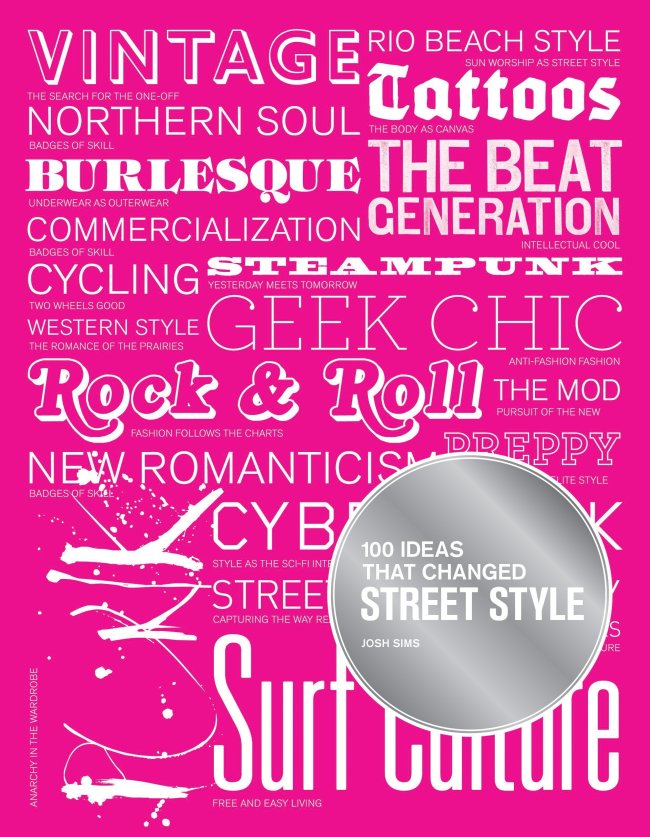Josh Sims’ “100 Ideas That Changed Street Style” is the latest in a “100 Ideas” series of books from Laurence King Publishing (other titles include “100 Ideas That Changed Graphic Design” and “100 Ideas That Changed Photography”), and the lavishly illustrated softcover book strikes an entertaining balance between encyclopedia and field guide as it sprints through some 70 years of street style.
Many of the movements, trends, fads, statements and style tribes highlighted, cross-sectioned and deconstructed are familiar, with Sims delving into dandyism (idea No. 4), pointing out preppy (No. 15), and tackling steampunk (No. 92). (There’s no explanation as to the ordering, but it appears the entries are arranged more or less chronologically.) Aerobics style of the 1980s ― think leg warmers ― earns an entry, and Japanese street style is well-represented with a handful of entries including Decora, Kogal and Lolita.
 |
“100 Ideas That Changed Street Style” by Josh Sims. (MCT) |
But since the book is headed for the triple digit mark, the author has the luxury of being able to reach both further afield and farther back in time to introduce even the most dedicated followers of fashion to a look or term they might not have heard of before. Examples here include the zazous of German-occupied France (“akin to the zoot suiters of the United States, and sharing a style with the British Teddy boys of the 1950s,” writes Sims), the stilyagis of ‘50s-era USSR (“members of a style cult that seemed to embody the ideological clash between capitalism and communism”), the paninaro of Milan (named after a sandwich shop near the Duomo) and the of-the-moment magpie style movement (so called, Sims writes, “for its readiness to borrow and radically combine looks from a host of twentieth- and twenty-first-century style tribes and trends.”)
Also worth noting is that the list includes some less obvious shapers of street style, such as the coffee bar (which Sims calls “the crucible of subculture”), social media (he writes that the ubiquity of affordable digital photography and Internet access “prompted an explosion of street style documentation and analysis”) and fast fashion (“[a]fter the late 1990s,” Sims says in the entry, “perhaps no single idea would define street-level fashion as distinctly as fast fashion.”)
Whether read straight through from teenager (No. 1) to magpie style (No. 100) or kept close at hand for future reference, “100 Ideas That Changed Street Style” would make a worthy addition to a summer reading list or bookshelf.
By Adam Tschorn
(Los Angeles Times)
(MCT Information Services)








